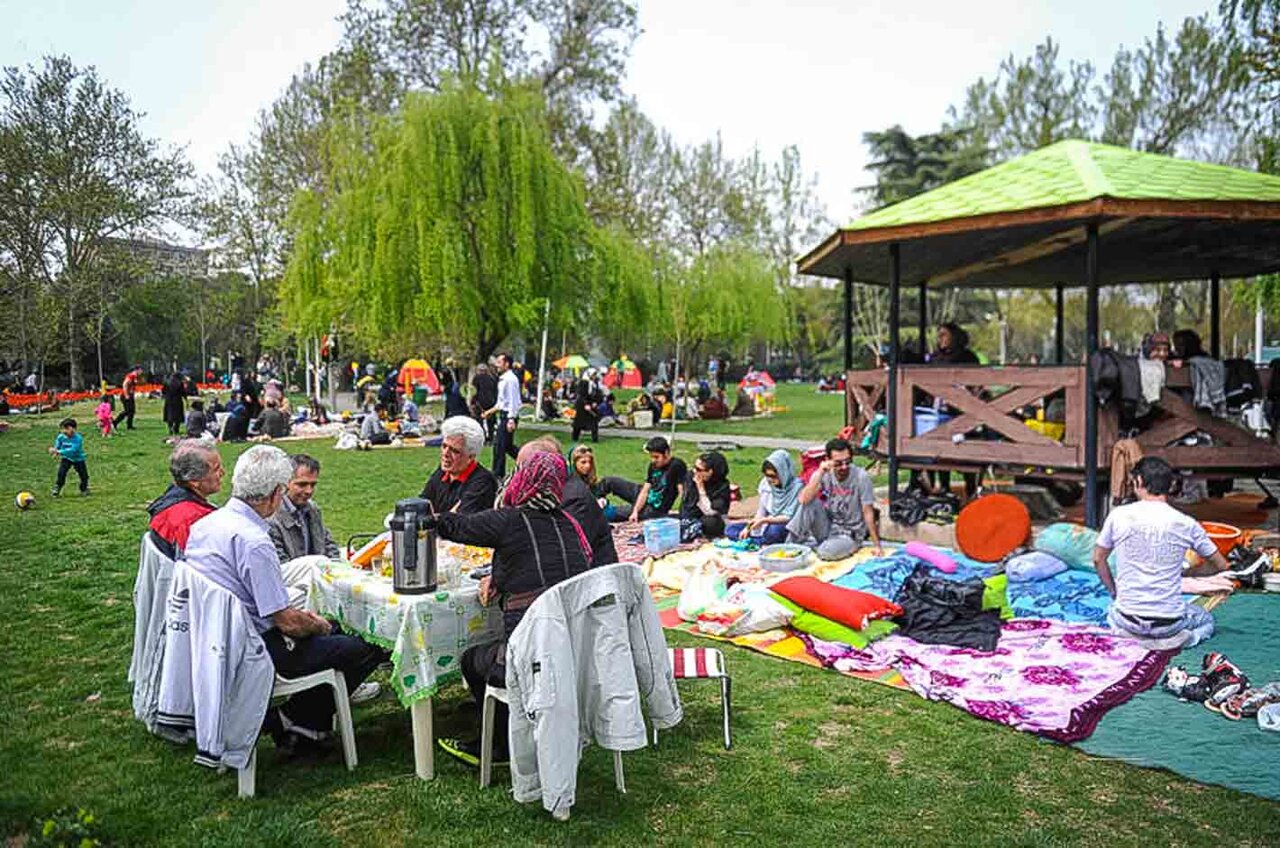Sizdeh Be-dar: Iranians flock to parks in celebration of nature

TEHRAN– On Sunday, Iranians enjoyed fresh air as they took to local parks, lush gardens, or green countryside to celebrate a national holiday known as Nature's Day.
Families played ball games, barbecued and relaxed during the day, called Sizdeh Be-dar, a public picnic day in early April.
The day marks the end of the Iranian New Year holidays and falls on the thirteenth day of Noruz.
They say the philosophy behind the festival is to avoid the bad luck associated with the number 13 in some cultures by not staying indoors on this day.
The official Noruz holidays fall four days after New Year's Eve, but schools and many shops remain closed until the day after Sizdah Be-dar, which usually falls on April 1 or 2.
‘Sizdeh’ or ‘Sizdeh’ means thirteen, and 'Be-dar' means to get rid of, bearing the meaning of ‘getting rid of thirteen.’
On the 13th day of Farvardin, which falls on April 2 in normal years and April 1 in leap years, everyone traditionally tries to spend and enjoy this day in the best possible way.
As in many other cultures, the number thirteen is unlucky in the Iranian tradition. Some Iranians believe that by going outdoors, they welcome the spring and leave behind all the bad luck associated with the number thirteen.
For millennia, Iranians have interwoven the magic of nature with the aesthetic qualities of art and architecture to create a symbolic representation of paradise on Earth, a phenomenon called the Persian Garden.
A typical Persian garden combines natural and artificial elements to represent the idea of creating a paradise on Earth using artistic, philosophical, figurative, and religious ideas.
According to UNESCO, the flawless design of the Persian Garden and its capacity, to adapt to extreme climatic conditions are the outcomes of the inspired and astute integration of various fields of knowledge, i. e. engineering, architecture, botany, agriculture, and water management.
AFM
